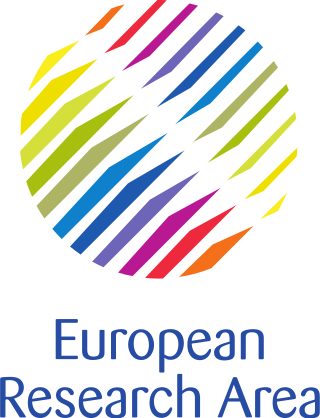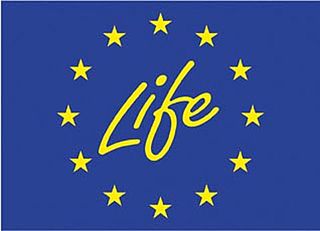The Trans-European Networks (TEN) were created by the European Union by Articles 154–156 of the Treaty of Rome (1957), with the stated goals of the creation of an internal market and the reinforcement of economic and social cohesion. To various supporters of this policy, it made little sense to talk of a big EU market, with freedom of movement within it for goods, persons and services, unless the various regions and national networks making up that market were properly linked by modern and efficient infrastructure. The construction of Trans-European Networks was also seen as an important element for economic growth and the creation of employment.

The regional policy of the European Union (EU), also referred as Cohesion Policy, is a policy with the stated aim of improving the economic well-being of regions in the European Union and also to avoid regional disparities. More than one third of the EU's budget is devoted to this policy, which aims to remove economic, social and territorial disparities across the EU, restructure declining industrial areas and diversify rural areas which have declining agriculture. In doing so, EU regional policy is geared towards making regions more competitive, fostering economic growth and creating new jobs. The policy also has a role to play in wider challenges for the future, including climate change, energy supply and globalisation.

The European Structural and Investment Funds are financial tools governed by a common rulebook, set up to implement the regional policy of the European Union, as well as the structural policy pillars of the Common Agricultural Policy and the Common Fisheries Policy. They aim to reduce regional disparities in income, wealth and opportunities. Europe's poorer regions receive most of the support, but all European regions are eligible for funding under the policy's various funds and programmes. The current framework is set for a period of seven years, from 2021 to 2027.
Flexicurity is a welfare state model with a pro-active labour market policy. The term was first coined by the social democratic Prime Minister of Denmark Poul Nyrup Rasmussen in the 1990s.

The European Research Area (ERA) is a system of scientific research programs integrating the scientific resources of the European Union (EU). Since its inception in 2000, the structure has been concentrated on European cooperation in the fields of medical, environmental, industrial, and socioeconomic research. The ERA can be likened to a research and innovation equivalent of the European "common market" for goods and services. Its purpose is to increase the competitiveness of European research institutions by bringing them together and encouraging a more inclusive way of work, similar to what already exists among institutions in North America and Japan. Increased mobility of knowledge workers and deepened multilateral cooperation among research institutions among the member states of the European Union are central goals of the ERA.

The budget of the European Union is used to finance EU funding programmes and other expenditure at the European level.
Interreg is a series of programmes to stimulate cooperation between regions in and out of the European Union (EU), funded by the European Regional Development Fund. The first Interreg started in 1989. Interreg IV covered the period 2007–2013. Interreg V (2014–2020) covers all 27 EU member states, the EFTA countries, six accession countries and 18 neighbouring countries. It has a budget of EUR 10.1 billion, which represents 2.8% of the total of the European Cohesion Policy budget. Since the non EU countries don't pay EU membership fee, they contribute directly to Interreg, not through ERDF.

The Directorate-General for International Partnerships is the European Commission department responsible for international development policy. It operates under the authority of the European Commissioner for International Partnerships, Jutta Urpilainen.
EQUAL was a Community Initiative within the European Social Fund of the European Union. It concerned “transnational co-operation to promote new means of combating all forms of discrimination and inequalities in connection with the labour market”. It ran from 2001 till 2007 with a budget of some €3 billion of EU resources, matched by a similar sum from national resources.
The European Observation Network for Territorial Development and Cohesion, ESPON for short, is a European funded programme under the objective of "European Territorial Cooperation" of the Cohesion Policy of the European Union. It is co-funded by the European Regional Development Fund - Interreg.
The EEA Grants and Norway Grants represent the contributions of Iceland, Liechtenstein and Norway to reducing social and economic disparities in the European Economic Area (EEA) and strengthening bilateral relations with 15 EU countries in Central and Southern Europe. Through the Grants, Iceland, Liechtenstein, and Norway are also contributing to strengthening fundamental European values such as democracy, tolerance and the rule of law.
The Alpine Space Programme is a transnational cooperation programme in the framework of the European Union cohesion policy. In this programme national, regional and local stakeholders from the participating countries in the Alpine space cooperate on various transnational projects.

The LIFE programme is the European Union's funding instrument for the environment and climate action. The general objective of LIFE is to contribute to the implementation, updating and development of EU environmental and climate policy and legislation by co-financing projects with European added value. LIFE began in 1992 and to date there have been five phases of the programme. During this period, LIFE has co-financed some 4600 projects across the EU, with a total contribution of approximately 6.5 billion Euros to the protection of the environment and of climate. For the next phase of the programme (2021–2027) the European Commission proposed to raise the budget to 5.45 billion Euro.
Europe 2020 is a 10-year strategy proposed by the European Commission on 3 March 2010 for advancement of the economy of the European Union. It aims at a "smart, sustainable, inclusive growth" with greater coordination of national and European policy. It follows the Lisbon Strategy for the period 2000–2010.

Cross-border cooperation is the collaboration between adjacent areas across borders. In the European Union this is one of the forms of territorial cooperation. The European model is very diverse with cooperation between border regions or municipalities, or through specific cooperation structures. These structures are usually composed by public authorities from different countries organized in working communities, euroregions or EGTCs.
The Greece–Bulgaria Territorial Co-operation Programme is a European cooperation Programme according to the European Cohesion Policy 2007–2013.
Andrey Grishev Novakov, Bulgarian: Андрей Гришев Новаков is a Bulgarian politician from the GERB political party and a member of the European parliament (MEP) as part of the political group of the European People's Party EPP. He is the youngest Member of the European Parliament and one of the youngest in the history of this institution.

Since its accession in the European Union in 2007, Bulgaria has been part of the EU's Cohesion Policy. This program introduces financial instruments, also known as the European Structural and Investment Funds, which aim to reduce the gap between different regions of the EU and improve their economic wellbeing.

The European Semester of the European Union was established in 2010 as an annual cycle of economic and fiscal policy coordination. It provides a central framework of processes within the EU socio-economic governance. The European Semester is a core component of the Economic and Monetary Union (EMU) and it annually aggregates different processes of control, surveillance and coordination of budgetary, fiscal, economic and social policies. It also offers a large space for discussions and interactions between the European institutions and Member States. As a recurrent cycle of budgetary cooperation among the EU Member States, it runs from November to June and is preceded in each country by a national semester running from July to October in which the recommendations introduced by the Commission and approved by the Council are to be adopted by national parliaments and construed into national legislation. The European Semester has evolved over the years with a gradual inclusion of social, economic, and employment objectives and it is governed by mainly three pillars which are a combination of hard and soft law due a mix of surveillance mechanisms and possible sanctions with coordination processes. The main objectives of the European Semester are noted as: contributing to ensuring convergence and stability in the EU; contributing to ensuring sound public finances; fostering economic growth; preventing excessive macroeconomic imbalances in the EU; and implementing the Europe 2020 strategy. However, the rate of the implementation of the recommendations adopted during the European Semester has been disappointing and has gradually declined since its initiation in 2011 which has led to an increase in the debate/criticism towards the effectiveness of the European Semester.

Next Generation EU is a European Union (EU) economic recovery package to support the EU member states to recover from the COVID-19 pandemic, in particular those that have been particularly hard hit. Agreed in principle by the European Council on 21 July 2020 and adopted on 14 December 2020, the instrument is worth €750 billion. NGEU will operate from 2021 to 2026, and will be tied to the regular 2021–2027 budget of the EU's Multiannual Financial Framework (MFF). The comprehensive NGEU and MFF packages are projected to reach €1824.3 billion.








